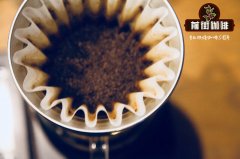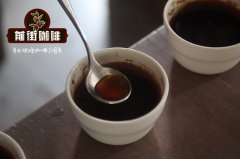Why do roasted coffee beans wrinkle? Coffee roasting method coffee roasting process

Professional coffee knowledge exchange more coffee bean information please follow the coffee workshop (Wechat official account cafe_style)
Why are the baked beans wrinkled on the surface?
If you look closely at the surface of baked beans, you will find that the lines on the surface of some beans are completely stretched, while others are not. How did this difference come about?
One of the reasons: the raw bean itself
Beans with high density are more likely to leave lines. If the word "high filling density" is difficult to understand, it will be easy for me to replace it with the phrase "pick it up with your hands and feel heavy".
Densely representative coffee beans from Kenya and Guatemala
Typical coffee beans with low density, grown in countries such as Brazil, Cuba and Jamaica.
However, even coffee beans from the same origin have different densities. The coffee beans with high altitude have high filling density, so the stretch of the grain is not very good.
Second reason: it has something to do with baking
Water vapor and carbon dioxide are released from the beans during baking, so the surface lines stretch out.
Especially when the firepower is strong or deep baking, a large amount of carbon dioxide will be emitted, so the stretching effect of the coffee bean lines will be very good. On the other hand, if the baking degree is relatively shallow or baked over low heat for a long time, the lines of coffee beans will be clearer.
Coffee beans baked with the same raw beans have different grain stretching, because they are roasted in a different way or baked to a different extent, so the taste is naturally different. We can't say that most of the surface lines are caused by poor baking skills or poor coffee beans. It would be unnecessary to roast coffee beans deeply just because they have lines on their surfaces.
At one point in the past, coffee beans were baked twice in pursuit of spreading the lines on the surface of lightly roasted coffee beans. They will first slightly roast the coffee beans to the state before the "popping", then cool quickly and bake for a second time, so that the lines of the coffee beans will stretch out. But the twice-baked coffee beans have a weak sour taste and a light taste.
Why do baked beans have grease on the surface?
The bright substance on the surface of coffee beans is the fat in beans. The carbon dioxide produced during baking allows the fat in the coffee beans to penetrate to the surface of the beans.
As the baking deepens, more carbon dioxide is produced. Not only will grease seep out during deep baking, but it will also seep out for a period of time after baking, because the carbon dioxide remaining in coffee beans is still released.
Carbon dioxide is released from coffee beans about a month after baking, with the maximum release in the first few days of baking. The grease can ooze about the same in the first few days of baking. Some people like coffee beans with a lot of fat on the surface, while others don't like them very much.
If the raw beans are the same and baked to the same extent, can the amount of oil exudation be controlled by a certain baking method?
It should be said that it can be controlled to a certain extent. If baked in a hurry, it is easy to produce a large amount of carbon dioxide, and it is also easy to produce a relatively fierce "popping bean sound", so the oil is easy to ooze out. On the contrary, if you bake slowly at a lower temperature, the amount of carbon dioxide produced and the sound of "popping beans" are relatively moderate, and the oil is less likely to ooze.
The baking method can also be inferred by observing the permeation of oil. However, after a period of time, the carbon dioxide is gradually released, and it is difficult to infer what baking method was used in the first place.
Will the oil seep out from the surface of the coffee beans and cause the coffee beans to deteriorate prematurely? Don't worry, the fat of coffee beans won't change for a long time. Because first of all, coffee beans are surrounded by a barrier of carbon dioxide; second, coffee beans also contain a lot of antioxidants. Many people think that the deterioration of coffee beans is "oxidation", but in fact, the "oxidation" of oil has nothing to do with the deterioration of beans.
What is the cause of "soy beans"?
There are two reasons for "oily beans":
A) stale shallow baked beans
The "light baked beans", which are light in heat and light brown in appearance, are dry and will not produce oil after baking. About five days after it comes out of the oven (it may be shortened to one or two days at the height of summer), the phenomenon of "spot oil" begins to appear (dotted oil droplets appear on one side of the coffee bean) Please note: a little "spot oil" does not mean it is not fresh. sometimes the flavor of light-roasted coffee beans is at its peak. Continue to put, more than two weeks after the oven, the surface of shallow baked beans gradually covered with a uniform, thin and bright oil, the smell is not sweet, but with fuel consumption, at this time, the flavor of "shallow baked beans" has gone downhill and should be avoided.
B) fresh deep baked beans
The deep-baked beans with dark brown appearance show a slight glossy appearance after baking, and a large amount of oil begins to appear on the surface from the first day to the second day. The bright-looking "deep-baked beans" not only do not mean that they are not fresh, on the contrary, the deep-baked beans will gradually dry out three weeks after they come out of the oven, and finally become dry-flavored beans. Therefore, if you see coffee beans that are dry but dark brown in appearance, please pay special attention to whether they are marked with the date of baking, which is most likely to be spoiled beans.
Important Notice :
前街咖啡 FrontStreet Coffee has moved to new addredd:
FrontStreet Coffee Address: 315,Donghua East Road,GuangZhou
Tel:020 38364473
- Prev

What about coffee oil? is coffee oil good for your health? why does coffee produce oil?
Professional coffee knowledge exchange more information about coffee beans Please pay attention to the coffee workshop (Wechat official account cafe_style) Coffee beans look oily on the surface, which comes from the lipids contained in the beans themselves. Arabica coffee beans contain nearly twice as many lipids as Congolese coffee beans, so Arabica seeds are more likely to produce oil if they are roasted at the same degree. The reason why there is special emphasis here.
- Next

Is the coffee as fresh as possible? How to raise coffee beans? what is the coffee awakening period?
Professional coffee knowledge exchange more coffee bean information Please pay attention to the coffee workshop (Wechat official account cafe_style) when most people buy things, the habitual thinking is "fresh is better" and "freshly baked is better". This idea is also used to buy coffee products, which is why many coffee shops advertise coffee beans that are "fresh and baked" and "fresh to drink".
Related
- Beginners will see the "Coffee pull flower" guide!
- What is the difference between ice blog purified milk and ordinary milk coffee?
- Why is the Philippines the largest producer of crops in Liberia?
- For coffee extraction, should the fine powder be retained?
- How does extracted espresso fill pressed powder? How much strength does it take to press the powder?
- How to make jasmine cold extract coffee? Is the jasmine + latte good?
- Will this little toy really make the coffee taste better? How does Lily Drip affect coffee extraction?
- Will the action of slapping the filter cup also affect coffee extraction?
- What's the difference between powder-to-water ratio and powder-to-liquid ratio?
- What is the Ethiopian local species? What does it have to do with Heirloom native species?

